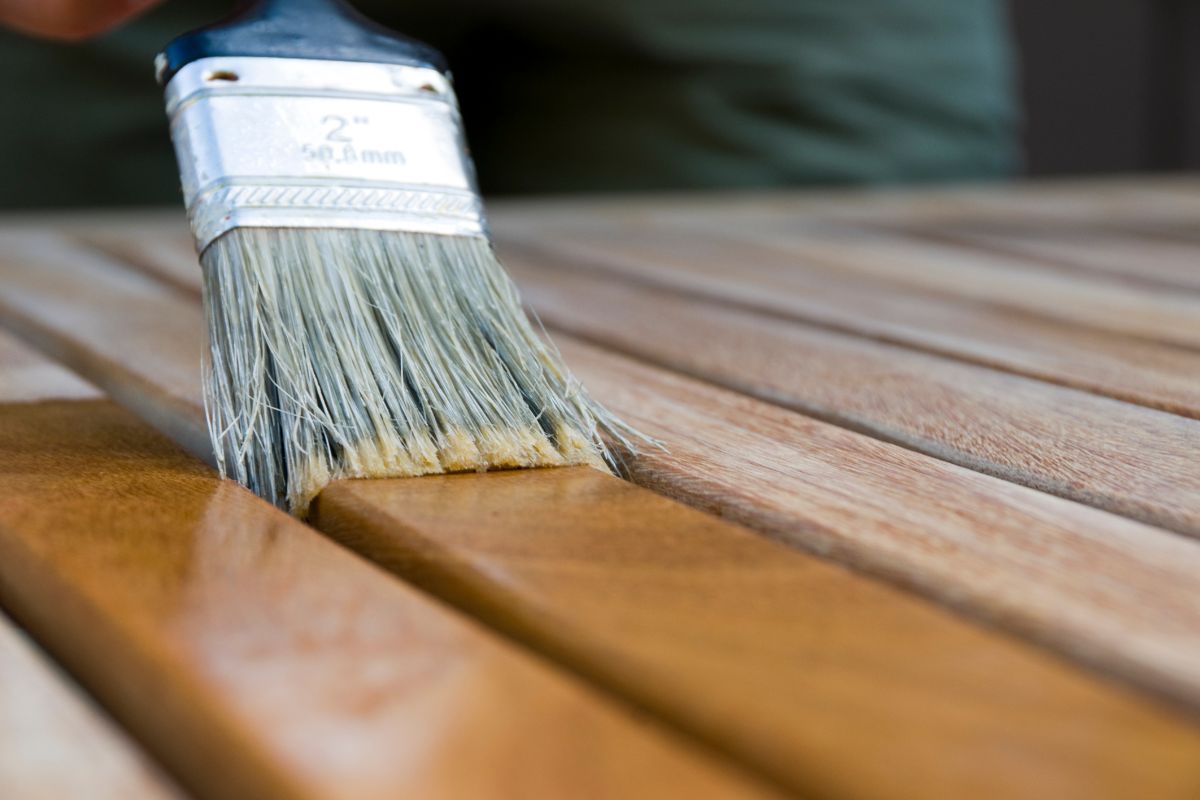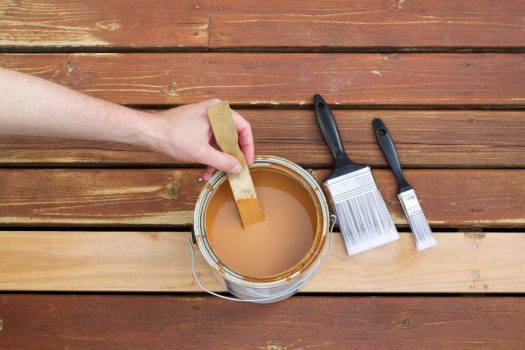Contents
The best way to remedy a staining error on wood is to sand the item down to bare wood and reapply the stain. Nonetheless, this requires some time.
Applying a second coat of stain, painting the piece, or using gel stain to smooth it out are alternative methods that might produce a satisfactory result.
If there is a chemical issue with your stain work (it is still sticky or there are white, cloudy spots), you will likely need to sand the item and refinish it.
However, before doing so, you should read this article about stain drying issues and their solutions.
Remove The Spot
Try this method if the stain is uneven or there are visible drips, and you don’t mind if the product becomes somewhat darker.
The good news is that it is easy to darken the wood.
If you are prepared to darken your item, you may remove blotchy stains by darkening it and blending the areas together!
Using a standard oil-based wood stain or a gel stain are the two approaches for this.
To apply an oil-based wood stain, purchase a darker stain than the one you currently have.
The darker the color, the less noticeable the blemishes will be.
Using a cloth or foam brush, apply the stain to the object after purchasing a darker hue, and then brush away any extra stain when it has sunk in.
Do not put an oil-based stain on top of a water-based one. This will never end well.
Gel stain is also more than appropriate for this application, albeit marginally more expensive than traditional oil-based wood stain.
Gel stain is a thicker form of standard stain that rests on the surface of the wood as opposed to permeating it.
The most significant element is that it conceals the flaws of the initial layer!
Before adding a small layer of gel stain with a cloth, ensure that the initial stain has completely dried.
Similar to the method of oil-based staining, apply a darker color.
The more obtrusive the stain, the more effectively it will disguise prior faults.
Gel stain is useful since it sits on top of the wood and does not cause blotching, so it will not exacerbate the problem.
This makes it the optimal stain for cheap, blotchy woods.
Eliminate The Spot
When the stain is still wet and you want it to be lighter and more consistent in color, you should apply water.
If the stain is blotchy or really dark, you can conduct this procedure in reverse.
The expectation is that by soaking the wood with a solvent, the stain will be diluted. This only applies to wet stains; it has no effect on dry stains.
Mineral spirits should remove common oil-based wood stains adequately. Water is excellent against stains composed of water.
Apply the solvent with a cloth, vigorously scrubbing as you go.
This serves the dual purpose of applying the substance and removing excess stains from the surface of the wood.
Note that this will not produce an ideal outcome: it will significantly reduce the stain, hopefully more so in areas that initially absorbed too much pigment.
Your results, however, will depend on the type of wood you use and its reaction to mineral spirits.
Bleach The Wood

Utilize bleach if you want your wood to become a lighter shade or bright enough to re-stain a new color.
First, we will discuss safety. Before adding bleach, ensure that the wood stain is totally dry if using this approach.
A strong chemical reaction may ensue otherwise. Bleach is effective only on stains composed of dyes, not pigments.
Unfortunately, makers of wood stains are not especially forthright about their products components.
Your stain might contain either pigment or dye or both. Bleach may have some impact, but it will not thoroughly clean the surface.
If you choose to lighten your stain anyways, you may try the bleach on an inconspicuous section of your project to evaluate how it affects the wood.
Therefore, you will have a decent idea before bleaching the entire object.
Once satisfied, apply bleach to the entire object using a spray bottle. After allowing it to sit and work for a few minutes, dilute it with water.
Before applying more stain or finish, wipe off the water/bleach solution with a towel and allow the wood to cure for several days.
You do not want to induce a harmful chemical reaction by mistake.
Even The Wood With Gel
If you find you have a somewhat blotchy finish with some areas significantly darker than others, you could use a gel stain to darken the lighter areas to match the darker areas.
If you buy a popular wood stain, gel stain is likely available in the same color. Purchase this color and apply it with a cloth to the desired areas of the object.
Gel stain can be applied repeatedly until the desired appearance is achieved, but bear in mind that the more gel stain you apply, the less the underlying wood will be visible.
Observe the gel stain’s directions regarding the amount of time between applications.
Wait at least 24 hours before applying a top coat once you are pleased with the appearance of your work.
In this circumstance, I would not use a water-based finish; shellac or an oil-based topcoat would be more suited.
Final Thoughts
Remember that painting is always an option if things go poorly, despite what internet trolls may say about covering up good wood.
Remember that a good primer improves paint adhesion and hides knots that may bleed through the paint over time.







